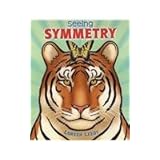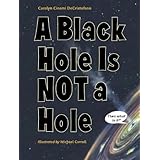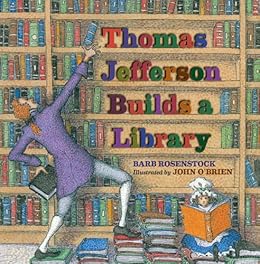While at last fall's ASJA conference, I sat down with the folks of AuthorLearningCenter. Here are a couple of short clips from that interview.
Organizing School Visits
The iPad Effect
Ramblings from the mind of a writer of nonfiction for children.
Monday, September 23, 2013
Monday, September 16, 2013
I Can't Handle the Truth! - Nonfiction Anxiety
I spoke with my editor about the biography I’m writing about
Thomas Jefferson. An email on Monday said she’d call on Friday. Nerve-racking anticipation for 4 days not knowing
if she’ll have good news for me, or, as I always assume, bad news.
This time my fears were unfounded. She had great ideas and
suggestions for me, as usual. I appreciate that she is my fresh pair of eyes. I have been living with my words for months,
so I no longer see gaps in the narrative, or places where I’ve tickled a reader’s
interest but not scratched the itch. And
then there are places where I haven’t supported my theme. I’ve stated it, but
not shown the proof. So, it’s back to
research to find those details in history that illustrate the nation growing as
a result of Thomas Jefferson’s influence.
I opened the fourth volume of Dumas Malone’s biography of TJ
and reread his introduction. He says: “Anyone
who essays to write the biography of a President must familiarize himself as
best he can with major events and developments in the country as a whole, and
if dealing with an age when international relations were of prime importance to
the Republic, he should try to see things in their world setting. He can hardly
know too much about times and circumstances and, as I am well aware he is
likely to know too little to orientate his subject properly.”
His last line makes me feel that I am in good company.
Malone spent some 40 years studying and writing about TJ, and yet he still had
moments where he felt like he didn’t know enough. How arrogant I am to attempt to excise a
sliver of TJ’s life and offer it to children with any kind of confidence. I
hope the 13 books I have stacked on my desk will help. (I know that a replica
of TJ’s revolving book stand would help. It held 5 books open at once for
easing viewing. That is the one thing I wanted at the Monticello gift shop and
the only thing they don’t sell. I could have gotten TJ bookmarks, coasters,
wine racks, tea towels… but no book stand.) The hours I have spent reading his
letters online and at the TJ library have to count for something, too.
I sometimes wonder why I write nonfiction. I can't handle the truth! A minefield of
potential errors stretch out in front of me, and that’s not including my normal
angst for making mistakes. Dates can be wrong, names can get screwed up, events
misconstrued, and you know there are thousands of TJ enthusiasts who are ready
to pounce on any little misstep. I can’t tell you how many times I’ve typed
1983 rather than 1783, and written Madison when I meant to write Monroe. Clearly, I have to get these two guys defined
in my head so that I have just as sharp an image of them as I do of TJ or
George Washington.
When you write a biography, you are never writing about one
person or one time or one event. You are always chasing down a succession of
details that radiate out from your subject like ripples around a stone plunked
into a still lake. Where do you stop? When the ripples or details take you back
to shore? No. Then you double back verifying those bits of information as they
radiate back to the source to make sure that, yes, those pieces fit. Those
connections connect. His cause had an effect, and vice versa.
See where I could go wrong?
Why do I do this, again?
Oh, yeah. I love it.
Wednesday, September 11, 2013
Vicki Cobb on Nonfiction and Literacy
The other day, Vicki Cobb, science writer, speaker, and founder of iNK Think Tank spoke with Mark Gura in a Literacy Special Interest podcast. Hang in there, Mark is a little coma-inducing, but when Vicki gets on you'll perk right up.
My favorite part is her description of story and communicating with an audience. She says, "The way that story gets processed through [ a nonfiction writer's] brains and comes out through their fingertips on the keyboard is where the humanity comes in, in the storytelling of the real world." She goes on to say, "It is revealed humanity -- who you are as a human being -- that is the subtext, the common denominator of all authentic communication. That's how you connect with people."
Check out more at -
My favorite part is her description of story and communicating with an audience. She says, "The way that story gets processed through [ a nonfiction writer's] brains and comes out through their fingertips on the keyboard is where the humanity comes in, in the storytelling of the real world." She goes on to say, "It is revealed humanity -- who you are as a human being -- that is the subtext, the common denominator of all authentic communication. That's how you connect with people."
Check out more at -
Monday, September 9, 2013
A Passion for the Real Thing
Growing up, I spent a lot of time in the nonfiction section
at the local library. My passions varied. Sometimes it was Indian lore and how
to make a teepee (mine never stayed up), horses, kitchen science, or true ghost
stories at Halloween. Basically I preferred
the real world over a fictional one. I
still do. That’s probably why I write nonfiction for kids today.
I’m proud to be part of a cadre of writers who are
constantly coming up with amazing true stories and innovative ways to tell
them. There is narrative nonfiction written with a story arc, books with two
tiers of text to hook children reading at different levels, and books that dig
deep into subjects kids care about. Here
are just a few of my favorites:
Rah, Rah Radishes! A Vegetable Chant by April Pulley
Sayre is a rollicking rhyme through a farmer’s market. A great read-aloud for little ones (and
teenage grocery clerks who don’t know bok choy from broccoli).
Seeing Symmetry by Loreen Leedy will catch a young
reader’s eye with the tiger on the cover. And the clear text and bright artwork
inside will have your child checking out the symmetry in your face, your food, your
furniture….
Older students will enjoy Those Rebels, John & Tom.
Author Barbara Kerley turns stone-faced historical figures John Adams and
Thomas Jefferson into real people who worked together and argued to create a nation.
Edwin Fotheringham’s humorous art perfectly
captures Kerley’s take on these two amazing men.
 You can follow that up with Thomas Jefferson Builds a Library
by Barb Rosenstock. It tells the story of how book-crazy Jefferson helped
create the Library of Congress. Each
page is filled with John O’Brien’s rich illustrations and primary source
quotes.
You can follow that up with Thomas Jefferson Builds a Library
by Barb Rosenstock. It tells the story of how book-crazy Jefferson helped
create the Library of Congress. Each
page is filled with John O’Brien’s rich illustrations and primary source
quotes.
Need to explain the Big Bang? Then grab Older than the
Stars by Karen C. Fox. The main text written in the style of The House That
Jack Built can be read by young readers, but those interested in the science
behind the “puffs” and “bangs” can read the side text about atoms of helium and
hydrogen, gravity and galaxies.
 A Black Hole Is Not a Hole is a fun look at a dark
subject. Carolyn Cinami DeCristofano’s
conversational style is right on target for any curious middle-schooler (or
adult) who wants to know how scientists know about stuff they can’t see.
A Black Hole Is Not a Hole is a fun look at a dark
subject. Carolyn Cinami DeCristofano’s
conversational style is right on target for any curious middle-schooler (or
adult) who wants to know how scientists know about stuff they can’t see.
So, if your child gravitates to the nonfiction section of
the library – Celebrate their passions! Together you can learn about lizards, or lasers, or (like one kid in my
neighborhood) Liberace (and hope the fad fades fast).
For more award-winning nonfiction ideas checkout http://inkthinktank.com/.
Subscribe to:
Posts (Atom)




